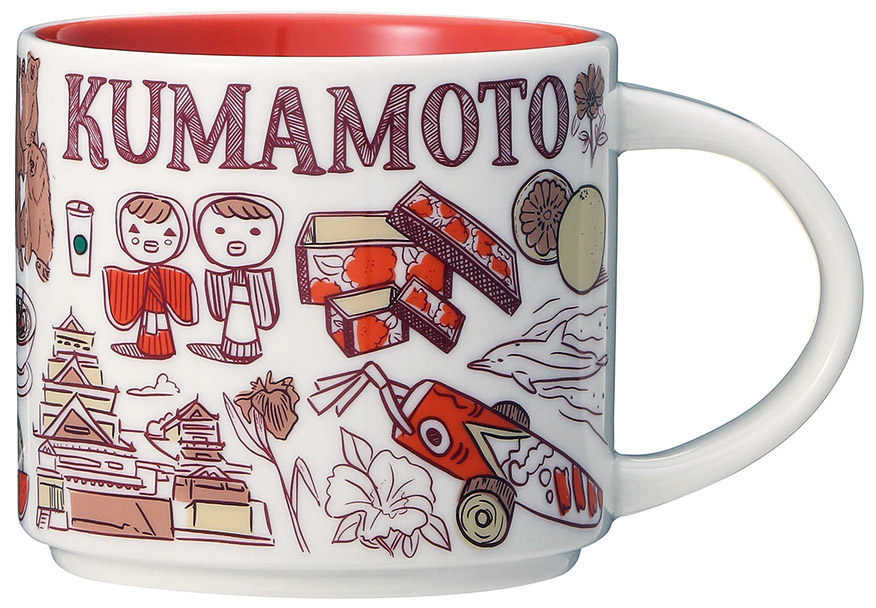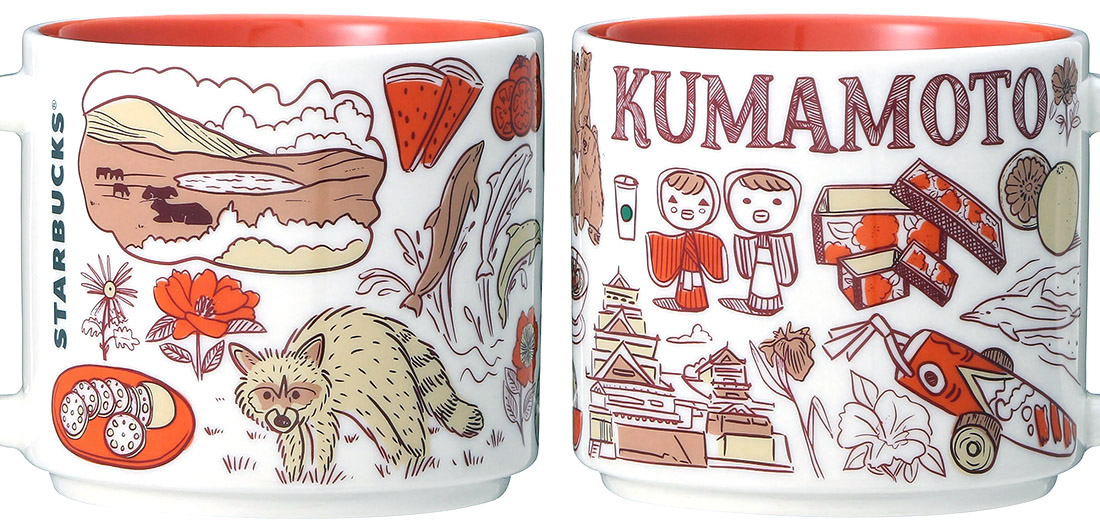
Been There – Kumamoto
Been There – Kumamoto seems to be the last mug from Japan that was missing on the site. It was released four years ago, so I am happy to finally add it.
Kumamoto, located on Japan’s Kyushu island, has a rich and resilient history centred around its iconic Kumamoto Castle. Built in the early 1600s by the feudal lord Kato Kiyomasa, the castle became a symbol of military strength and architectural ingenuity, featuring complex defensive designs. During the late Edo period, Kumamoto served as a key stronghold for the Hosokawa clan, who governed the region for over 200 years. The city played a notable role in the Satsuma Rebellion of 1877, when the castle withstood a fierce siege led by samurai opposed to Japan’s modernization. Today, Kumamoto blends its samurai-era heritage with modern life, and ongoing efforts to restore its historic sites—especially after the 2016 earthquakes—highlight the city’s enduring cultural pride.
Other symbols and points of interest from the design of the Kumamoto mug:
– Located in the eastern part of Kumamoto Prefecture, Mount Aso is one of the world’s largest active volcanoes, with a massive caldera and a dramatic crater. The surrounding grasslands are home to grazing cattle, creating a picturesque rural landscape. Aso is not only a geological wonder but also a vital part of the region’s agricultural and cultural identity.
– Dolphins illustrated on the mug represent the Amakusa area, a group of islands in western Kumamoto known for dolphin watching tours. Visitors can often spot wild bottlenose dolphins from sightseeing boats that operate year-round. The activity highlights the connection between Kumamoto’s coastal environment and marine life.
– Karashi Renkon Chips (spicy lotus root chips) are a unique Kumamoto delicacy, traditionally made by filling lotus root holes with mustard-miso paste and frying them. On the mug, they appear as sliced rounds on a red plate near flowers and the tanuki. A modern twist on a historic dish, Karashi Renkon reflects Kumamoto’s inventive food culture rooted in local ingredients.
– Hanatebako, meaning “flower hand box,” is a traditional folk art originating from Kumamoto Prefecture in Kyushu, Japan. It is a small wooden box beautifully decorated with pictures of flowers, showcasing the region’s artistic heritage. These boxes are not only charming keepsakes but also reflect the cultural craftsmanship unique to Kumamoto
– The trio of bears probably symbolize Kumamon, the beloved mascot of Kumamoto Prefecture, often seen in different costumes during local events. Though the mug stylizes them as simple, cheerful figures, they carry the spirit of regional pride and revitalization. Kumamon was created to promote tourism after the Kyushu Shinkansen line opened and has since become a national—and international—icon.














































































